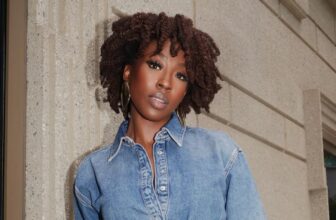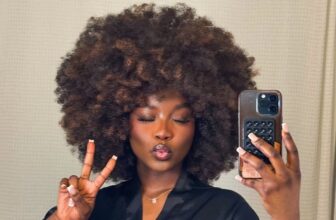Hair Dusting: What It Is And How To Dust Your Hair To Grow Longer and Healthier
Many people are familiar with regular haircuts or trims to maintain the health and appearance of their hair. However, there’s a lesser-known technique called hair dusting that can help you achieve longer and healthier hair without sacrificing length.
Hair dusting involves removing split ends and damaged hair without actually cutting off the length. With the right tools and technique, you can easily dust your hair at home and promote hair growth. Read on to learn more about what hair dusting is, why it’s beneficial, and how you can incorporate it into your hair care routine for optimal results.
What is Hair Dusting?
Hair dusting is a technique that allows you to remove and cut out split ends without losing length—it’s like a gentle touch-up for your hair. The main purpose of dusting hair is to target and eliminate dry or damaged ends, unlike a regular trim, which can cut off a significant amount of hair.
The concept of hair dusting originated from an old method where sections of hair were twisted and burned with a candle flame to remove split ends. Fortunately, the modern version of hair dusting uses shears instead of flames, making it safe and effective for all hair types, especially for those who want to maintain long and healthy strands.
Three Key Benefits of Hair Dusting for Longer Hair
Cost-effective Solution:
For many of us, following the typical recommendation of getting a haircut every eight weeks may seem impractical. Hair dusting offers a simple and affordable alternative for those who can’t afford frequent salon visits.
By removing split ends and extending the time between trims, you can maintain your hair’s health without breaking the bank. Plus, you can easily perform this technique at home without spending a fortune on salon treatments.
Hair Health Maintenance:
We’ve all experienced the disappointment of losing precious inches of hair in the quest to maintain its health. Hair dusting allows you to preserve length while still addressing split ends. By targeting only the damaged parts of your hair, this method keeps your hair long and healthy. It’s a win-win for maintaining both length and hair health.
Targeted Damage Repair:
Dusting focuses on the areas of your hair that are split, excessively dry, or damaged, effectively eliminating dead ends.
This gentle trim not only enhances the overall appearance of your hair but also makes it easier to manage. If you struggle with annoying flyaways, hair dusting can be your saving grace by getting rid of those troublesome hairs for a smoother and more manageable mane.
Hair Dusting Vs. Trimming: What’s the Difference?
Dusting and trimming are like cousins in the haircare world, but they have some key differences. When hairstylists trim hair, they usually do it to refresh the haircut’s shape or get rid of dry, brittle ends.
Trimming usually involves cutting off about 2 inches of hair or less. On the other hand, dusting is a more delicate process that might only remove a quarter inch of hair or even less. Sometimes, it doesn’t remove any length at all—it just targets those tiny split ends at the tips of your hair strands.
When deciding between dusting and trimming, think about your hair goals. Are you trying to make your hair longer or give it more bounce? If your hair looks dull and lifeless, a trim can remove extra weight and bring back some vitality to your locks.
Keep in mind that using heat styling tools frequently can lead to split ends, even if you use protective products. Eventually, your hair can only take so much damage. Dusting split ends as they appear can help you go longer between trims and full haircuts.
Generally, dusting is cheaper than trimming. It can save you money, but it’s important to ask your hairstylist if it’s the right choice for your hair. Your stylist may recommend a small trim if it’s better for your hair’s health and your long-term hair goals. Getting personalized advice from a professional is the best way to take care of your hair in the long run.
How Often Should You Dust Your Hair?
Experts suggest getting a full dust every three months to keep your hair healthy. A complete dust usually removes around 1-2 inches of hair length, targeting both excess length and unhealthy hair. However, if you want to maintain strong and healthy-looking hair, dusting every 6 to 8 weeks is recommended.
Although everyone’s hair is different, if you use styling tools frequently or have thin hair that’s prone to damage, you might need to dust your split ends more often. Remember, dusting your hair helps keep it in good condition by getting rid of broken ends, but it doesn’t focus on creating specific hairstyles.
Are There Any Drawbacks to Hair Dusting?
Hair dusting shouldn’t leave your hair looking thin or frizzy, nor should it weaken your strands. However, it’s important not to overdo it. If you’re interested in trying this technique, make sure your stylist is properly trained to avoid cutting off more hair than necessary. This could result in unwanted layers and make your hair appear more damaged, which defeats the purpose of dusting.
Another downside is that hair dusting is more suitable for straight hair types. While it’s possible to dust wavy, curly, or textured hair, it may take longer and require a thorough understanding of each hair type. That’s why it’s best to choose a hairdresser with experience and expertise in your specific hair texture.
Is It Okay To Dust Your Hair Yourself?
Usually, it’s not advised to try cutting your hair, but if you’re determined to give it a try, dusting is a safer option.
Since dusting only removes a small amount of length, you can attempt it at home without risking a major haircut disaster. (However, we still suggest consulting a professional whenever you can.)
Check out the tutorials below for tips on how to dust different hair types.
How to Dust Straight Hair
- Dry your hair: Start with smooth, dry hair. It’s easier to spot the flyaways that need trimming when your hair is straightened.
- Section it off: Divide your hair into small sections and clip away the rest. Working with one section at a time ensures thoroughness.
- Twist and cut: To highlight split ends, twist the section until you see little hairs sticking out, then trim them off (less than a quarter of an inch should suffice). Alternatively, you can tightly wrap the section around your finger and press it between your fingers to keep it taut.
- Repeat steps two and three: Continue this process until you’ve checked your entire head of hair. And that’s it!
How to Dust Curly Hair
- Dry your hair: While dusting is easiest on blown-out, straightened hair, you can still trim split ends on curly hair—just ensure it’s completely dry.
- Section it: Divide your hair into small sections or coils using clips. Working in smaller sections makes the process easier.
- Stretch the curl and cut: Pull each small section tight and wrap it over your finger to make split ends more visible. Then, trim the very tip of the strand (about a quarter of an inch).
- Repeat: Keep sectioning your hair, stretching the curls, and trimming split ends until you’ve dusted every section.
How to Dust Natural Type-4 Hair
- Dry your hair: Make sure your hair is completely dry. It doesn’t have to be straightened, but dry hair is essential for spotting split ends.
- Section it: Work on one small section of hair at a time and clip the rest out of the way.
- Pull it tight and cut: Wrap the section of hair over your middle finger and use your other fingers to keep it taut. Slide your hand down to the ends and trim any strands that stick out (about a quarter of an inch).
- Repeat: Keep going until you’ve dusted all sections of your hair.
You May Also Like:
15 Chic Braided Bob Hairstyles to Try for a Confident Look
December 23, 20255 Ways Honey Can Transform Your Hair Routine Naturally
December 22, 202515 Festive Holiday Hairstyle Ideas That Will See You Through The Season
December 10, 2025How to Maintain Natural Hair Moisture During The Festive Season
December 9, 2025Kim Kardashian Expands Skims Into Hair Care With New Tangle Teezer and Slip Collabs
December 2, 2025How To Protect Your Natural Hair Under Wigs
December 1, 2025Pixie Cut Fever: Every Black Woman Suddenly Wants the Big Chop
November 5, 2025The Best Hairstyles for Women Over 50, According to Real Women
November 3, 2025Cardi B Says She Hasn't Washed Her Hair in 3 Months and Fans Does Not Like It
October 31, 202520 Sew-In Hairstyles So Gorgeous You’d Want to Screenshot
October 30, 2025Is 2025 The End of the Natural Hair Movement?
October 23, 2025Miley Cyrus Debut a Short Curly Blonde Hair and It's Cute
October 21, 2025Esther Ejoh is a Fashion Editor at Fashion Police Nigeria, where she writes all things fashion, beauty, and celebrity style, with a sharp eye and an even sharper pen. She’s the girl who’ll break down a Met Gala look one minute, rave about a Nigerian beauty brand the next, and still find time to binge a movie or get lost in a novel. Style, storytelling, and self-care? That’s her holy trinity.






